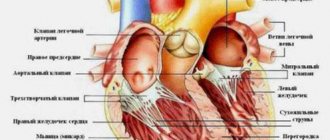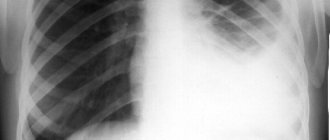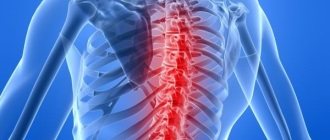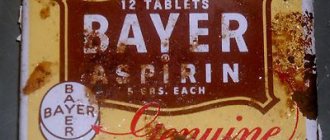When a person has a heart attack, they need to know what to do and responding quickly can help them achieve a better outcome.
A heart attack occurs when there is a blockage in blood flow to the heart, blocking the delivery of oxygen and other nutrients. This situation can damage or even kill parts of the heart tissue.
Although movies may show heart attacks to occur suddenly, many heart attacks start slowly and have many warning signs.
Signs and symptoms
A heart attack can cause pain in the shoulders and arms.
The main symptoms of a heart attack include the following:
- Chest pain or discomfort . Chest pain or discomfort may feel like pressure, tightness, or a squeezing sensation.
- Shortness of breath: Difficulty breathing, this may occur with or without chest pain.
- Discomfort in other parts of the body : back, arms and shoulders, neck or jaw.
- Heart rhythm disturbance
While both men and women can experience the initial signs and symptoms of a heart attack, the symptoms we've listed above are more common in men.
Women are more likely to experience additional signs and symptoms. These include:
- nausea and stomach upset
- abdominal pain
- cold sweat
- weakness
- sudden dizziness
- increased sweating
conclusions
Under a heart attack with characteristic symptoms of chest pain, shortness of breath, rapid rhythm or pulse, many pathological conditions can be hidden. Pain in the heart does not always indicate a heart attack. The cause of deterioration in well-being may be an exacerbation and transition of angina to an unstable form, vegetative-vascular dystonia (VSD), malignant arrhythmia, thromboembolism or heart failure. Therefore, if characteristic signs and complaints occur, you should immediately consult a doctor and call an ambulance. This will minimize the risk of cardiac complications and save lives.
What to do
A heart attack requires emergency medical attention. If someone has a heart attack, they should immediately call 112 for emergency help before doing anything else. Act quickly - it could help save someone's life.
First aid for myocardial infarction
Myocardial infarction is a type of ischemic heart disease characterized by irreversible damage to the heart muscle as a result of deterioration of blood flow through the coronary arteries
Characteristic signs (symptoms) of a heart attack (myocardial infarction):
- • sudden (paroxysmal) pressing, squeezing, burning, aching pain in the chest (behind the sternum) lasting more than 5 minutes;
- • similar pains are often observed in the left shoulder (forearm), left shoulder blade, left half of the neck and lower jaw, both shoulders, both arms, the lower part of the sternum along with the upper abdomen;
- • lack of air, shortness of breath, severe weakness, cold sweat, nausea often occur together and sometimes follow or precede discomfort/pain in the chest;
- • it is not uncommon for these manifestations of the disease to develop against the background of physical or psycho-emotional stress, but more often with some interval after them.
Uncharacteristic signs that are often confused with a heart attack:
- • stabbing, cutting, pulsating, boring, constant aching pain for many hours and not changing its intensity in the heart area or in a specific clearly defined area of the chest
Algorithm of actions in case of a heart attack
If you or someone else suddenly has the above characteristic signs of a heart attack, even with weak or moderate intensity, which last more than 5 minutes, do not hesitate, immediately call an ambulance team. Do not wait more than 10 minutes - in such a situation it is life-threatening.
If you have symptoms of a heart attack and there is no way to call an ambulance, then ask someone to take you to the hospital - this is the only right decision. Never drive yourself unless you have no other choice.
In the most optimal scenario, if a heart attack occurs, you must act according to the following algorithm:
- • Immediately after an attack occurs, sit down (preferably in a chair with armrests) or lie in bed with the head of the bed raised, take 0.25 g of acetylsalicylic acid (aspirin) (chew the tablet, swallow) and 0.5 mg of nitroglycerin (spray one inhalation dose into the cavity mouth while holding your breath, place one tablet/capsule under the tongue, first bite the capsule, do not swallow); free your neck and provide fresh air (open the vents or windows).
- • If after 5-7 min. After taking acetylsalicylic acid (aspirin) and nitroglycerin, the pain persists, it is imperative to call an ambulance team and take nitroglycerin a second time.
- • If pain persists 10 minutes after taking the second dose of nitroglycerin, it is necessary to take nitroglycerin a third time.
- • Give the patient a sedative (motherwort or valerian). There should be silence in the room, not allowing the sick person to become nervous.
- • If after the first or subsequent doses of nitroglycerin there is severe weakness, sweating, shortness of breath, you need to lie down, raise your legs (on a bolster, etc.), drink 1 glass of water and then, as with a severe headache, do not take nitroglycerin.
- If a person with a heart attack is unconscious and there is someone nearby who knows how to provide first aid in this situation, then you need to do it immediately!
First aid
If you have a heart attack, act immediately. Many people wait too long because they do not recognize warning signs. Take the following steps:
- Call an ambulance. If you suspect a myocardial infarction, do not hesitate to call. Immediately dial 03, 911 or 112. If you do not have access to a telephone, find someone who can take you to the nearest medical facility or heart center. If you drive in this condition, you are putting yourself and others at serious risk.
- Take nitroglycerin if you have been prescribed it. If your doctor prescribed nitroglycerin, take it as directed while you wait for emergency personnel to arrive.
- Take aspirin if it is recommended for you. If you are concerned about your risk of heart attack, ask your cardiologist if you can chew an aspirin tablet. Taking aspirin during a developing heart attack will help reduce damage to the heart by reducing blood clots.
Causes and risk factors
A person needs to be aware of the risk factors so that they can take steps to prevent a heart attack.
There are some heart attack risk factors that people can control and others that they cannot.
Risk factors include:
- Age: men and women over 60 years old.
- Gender : Men are more likely than women to have and die from a heart attack.
- Family history: People with a family history of cardiovascular disease are more likely to suffer a heart attack.
- Race and ethnicity : Some ethnic groups, including African Americans, some Asians, and Mexican Americans, are more likely to have a heart attack than others.
Although people cannot influence the risk factors listed above, there are many risk factors they can change or treat to prevent a heart attack.
Modifiable risk factors for heart disease and heart attack include:
- obesity
- high blood pressure
- high cholesterol
- diabetes
- unhealthy diet high in saturated fat and sodium
- tobacco use
- excessive alcohol consumption
- not enough exercise
How to distinguish angina from myocardial infarction?
| Typical angina pectoris | Typical myocardial infarction |
| Pain in the center of the chest, in the middle third of the sternum, can spread to the left arm, shoulder blade, lower jaw, and upper abdomen. | The pain is similar to that of angina pectoris, but more often it is felt as more intense, unbearable, tearing and affects the entire left half of the chest. |
| Discomfort is mild or moderate. | Severe discomfort, increased sweating, dizziness, nausea, increasing feeling of lack of air, fear of death. |
| An attack of angina is more often associated with previous physical activity or emotional arousal. | Myocardial infarction can occur at any time, including at rest. |
| The pain attack takes about 3 – 15 minutes. | A painful attack with discomfort and suffocation lasts for at least 15 – 30 minutes or more, and there is a tendency for symptoms to increase. |
| With rest, the pain usually goes away. | In a state of physical rest, the pain does not go away completely and intensifies when talking and deep breathing. |
| The use of nitroglycerin under the tongue or in the form of an aerosol from 1 to 3 doses interrupts an attack of angina. | Symptoms do not completely resolve after 3 doses of nitroglycerin. |
Preventing the risk of heart disease and heart attack
The best way to prevent a heart attack is to reduce any risk factors.
You can reduce your chances of having a heart attack:
- weight loss if you are obese or overweight
- treating high blood pressure and high cholesterol by consulting your doctor
- Controlling diabetes through diet, medications, and blood sugar control
- Eat a diet rich in fresh vegetables and fruits, low in saturated fats and processed foods
- quit smoking
- limit your alcohol consumption!
- at least 2-3 hours of moderate physical activity per week
Also, get regular checkups with your doctor. Regular screenings can help identify new risk factors for heart disease that a person may develop and monitor any existing ones.
Heart attacks are a medical emergency. Knowing the signs and symptoms of a heart attack can help a person get the help they need as early as possible. Reducing risk factors for heart disease can help a person prevent a heart attack.
Why is it useful to know about the symptoms of a heart attack?
It is important for patients suffering from diseases of the cardiovascular system and their loved ones to know about the symptoms of heart attacks, because heart attacks occur in people who felt absolutely healthy just yesterday. The risk group includes older and elderly people, patients with coronary heart disease. Risk factors include smoking and lack of physical activity, and a genetic predisposition to heart and vascular diseases. Atherosclerosis of the heart vessels often leads to heart attacks. This is a disease in which cholesterol plaques form in the coronary arteries. Arterial blood does not fully flow to the heart when the vessels are narrowed and the vascular lumen is blocked. Read more about the main causes of heart attacks here.
Even with a favorable outcome, when the patient’s life was saved, there is a risk that he will have to face various complications. For example, after a heart attack, arrhythmia occurs and a pacemaker is required. It is important to know what signs indicate a heart attack, because timely assistance helps prevent irreparable consequences.
Does the heart recover after a heart attack?
After a heart attack, it is possible to normalize the functioning of the heart, but it is impossible to restore cells that have lost their functionality. This also applies to cases where a person is provided with timely first aid for a heart attack. However, scientists talk about the possibility of restoring dead heart tissue using regenerative medicine. They plan to achieve this thanks to stem cells that are injected into the heart area, through which the process of regeneration of damaged cardiac tissue can be started.
There are two types of complications that can occur after a heart attack: those that occur almost immediately and those that occur afterward (in the following days, a week, or even a month later).
Complications that occur immediately after a heart attack include:
- arrhythmia - the heart beats irregularly, too fast or too slow;
- cardiogenic shock - a person’s blood pressure suddenly drops, as a result of which the heart cannot supply the body with enough blood to function properly;
- hypoxemia - oxygen levels in the blood become too low;
- pulmonary edema—fluid accumulates in and around the lungs;
- deep vein thrombosis - blood clots form in the deep veins of the legs and pelvis, which either block or interrupt blood flow in the vein;
- myocardial rupture - a heart attack damages the heart wall, causing it to rupture.
- Ventricular aneurysm - the ventricle forms a bulge.
Complications that occur after a heart attack include:
- aneurysm—scar tissue accumulates on the damaged heart wall, leading to blood clots, low blood pressure, and abnormal heart rhythms.
- angina pectoris - not enough oxygen reaches the heart, which causes chest pain;
- congestive heart failure - the heart may beat very weakly, causing the person to feel exhausted and experience shortness of breath;
- swelling - fluid begins to accumulate in the ankle area;
- loss of erectile function, loss of libido;
- pericarditis is an inflammation of the lining of the heart that causes severe chest pain.
Angina pectoris
Atherosclerosis
Diabetes
Stroke
22622 May 20
IMPORTANT!
The information in this section cannot be used for self-diagnosis and self-treatment.
In case of pain or other exacerbation of the disease, diagnostic tests should be prescribed only by the attending physician. To make a diagnosis and properly prescribe treatment, you should contact your doctor. Angina pectoris: causes, symptoms, diagnosis and treatment methods.
Definition
Angina is a clinical syndrome manifested by a feeling of tightness or squeezing pressing pain in the chest, which is most often localized behind the sternum and can radiate (“give”) to the left arm, neck, lower jaw, and to the epigastric region (epigastric region).
Pain occurs during physical activity or exposure to other factors that increase the heart's need for oxygen, and lasts from 1 to 15 minutes. It goes away with rest (when you stop exercising) or 1-3 minutes after taking nitroglycerin.
Translated from ancient Greek, angina means “narrow (weak, cramped) heart.”
Causes of angina
The development of angina is based on three mechanisms:
- atherosclerotic lesions of the coronary arteries;
- transient vascular thrombus formation;
- decreased coronary blood flow due to spasm or increased tone of the coronary arteries.
Angina pectoris makes itself felt during physical activity or stressful situations when there is a narrowing of the lumen of the coronary artery by 50-70%.
The severity of angina depends on the degree of coronary artery stenosis, its location and extent, the number and number of affected arteries. An atherosclerotic plaque can block a vessel completely or partially. With an increase in blood pressure, the inner layer of the coronary arteries (endothelium), damaged by the atherosclerotic process, can be easily damaged, blood penetrates into the plaque, the blood clotting process is activated and a blood clot is formed, which can partially or completely block the vessel.
The formation of a blood clot, especially against the background of a vessel spasm, can lead to its complete or partial blockage.
When myocardial tissue is damaged, pain mediators (serotonin, histamine, bradykinin, etc.) are released, which affect pain receptors.
There are modifiable (those that can be influenced) and non-modifiable factors that can provoke the development of angina. Modifiable diseases include dyslipoproteinemia (violation of the normal ratio of blood lipids), arterial hypertension, diabetes mellitus, smoking, low physical activity, obesity, and stress. Non-modifiable factors - male gender, age, family history of cardiovascular diseases (myocardial infarction or ischemic stroke in close relatives - up to 65 years (for women) and up to 55 years (for men)).
Classification of the disease
The most widespread classification of angina pectoris, developed
on the basis of WHO expert recommendations
:
- Stable angina pectoris (indicating functional class from I to IV).
- Class I – the patient tolerates physical activity well, angina attacks occur only during high-intensity exercise; Class II - slight limitation of usual physical activity, angina attacks occur when walking on level ground for a distance of more than 500 m, when climbing more than one floor; Class III – pronounced limitation of normal physical activity, attacks occur when walking at a normal pace on level ground for a distance of 100-150 m, or when climbing one floor; Class IV - angina occurs with little physical activity, walking on level ground at a distance of less than 100 m.
- Unstable angina:
- new-onset angina (less than 1 month from the onset of attacks);
- progressive angina (increasing attacks in frequency, duration, intensity with expanding localization and irradiation);
- early post-infarction (within 2 weeks after acute myocardial infarction) or post-operative angina.
- Spontaneous (vasospastic, variant, Prinzmetal) angina.
In practice, doctors also use the clinical classification of stable angina
:
- stable exertional angina (indicating the functional class);
- vasospastic angina;
- microvascular angina.
Symptoms of angina
Pain from angina can sometimes be perceived not as true pain, but as a feeling of discomfort, a feeling of heaviness, squeezing, tightness, distension, burning or lack of air.
Most often, the pain is localized behind the sternum or along the left edge of the sternum. It can radiate to the neck, lower jaw, teeth, interscapular space, and less often to the elbow or wrist joints, mastoid processes.
Pain with angina pectoris usually lasts from 1 to 15 minutes.
Pain occurs at the peak of physical or emotional stress. Stressful situations, due to increased activity of the sympathoadrenal system, lead to an increase in heart rate, increased blood pressure and myocardial contractility, which means the myocardial need for oxygen increases. After taking nitroglycerin or stopping the exercise, the pain stops, and the pain attack stops faster in a sitting or standing position.
As angina progresses, a moment comes when attacks occur even with minimal exertion, and then even under conditions of physical rest.
Angina at rest joins angina pectoris and is combined with it. In such cases, attacks occur during times of increased oxygen consumption by the heart muscle, for example, during REM sleep, when the heart begins to beat faster.
In some patients, an attack of angina may occur in a horizontal position due to increased blood flow to the heart.
Vasospastic angina develops independently of physical and emotional stress, is caused by spasm of the coronary arteries, and usually occurs at a younger age than exertional angina due to atherosclerosis of the coronary arteries. In patients with vasospastic angina, many typical risk factors for atherosclerosis cannot be identified. The disease may be accompanied by threatening disturbances in heart rhythm, leading to the development of myocardial infarction and/or sudden death.
A feature of vasospastic angina is very severe attacks, usually localized in a typical location. They occur at night or early in the morning, and also when exposed to cold on exposed areas of the body.
Microvascular angina is characterized by attacks that occur some time after physical activity, during emotional stress and at rest; they are poorly controlled by nitroglycerin. The cause of microvascular angina is considered to be dysfunction of small coronary arteries (100-200 μm in diameter) in the prearteriolar segment of the coronary bed. In more than 70% of cases, microvascular angina coexists with classical angina in patients with atherosclerotic stenoses.
Diagnosis of angina pectoris
The diagnosis of angina is established on the basis of a combination of complaints (pain characteristic of angina) and information received from the patient about the course of the disease.
For all patients with suspected coronary heart disease, the following questions are asked:
- current or past smoking;
- the presence of cardiovascular diseases and/or deaths from cardiovascular diseases in the patient’s immediate relatives (father, mother, siblings);
- previous cases of seeking medical help and the presence of previously registered electrocardiograms, studies and conclusions;
- the presence of concomitant diseases in order to assess additional risks;
- currently taken medications.
To clarify the diagnosis and existing complications, data from laboratory and instrumental examination methods are used.
All patients with suspected angina are recommended to have a lipid profile tested to detect dyslipoproteinemia:
- triglycerides (Triglycerides);









